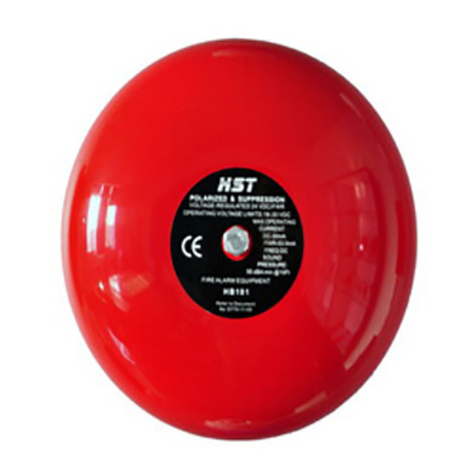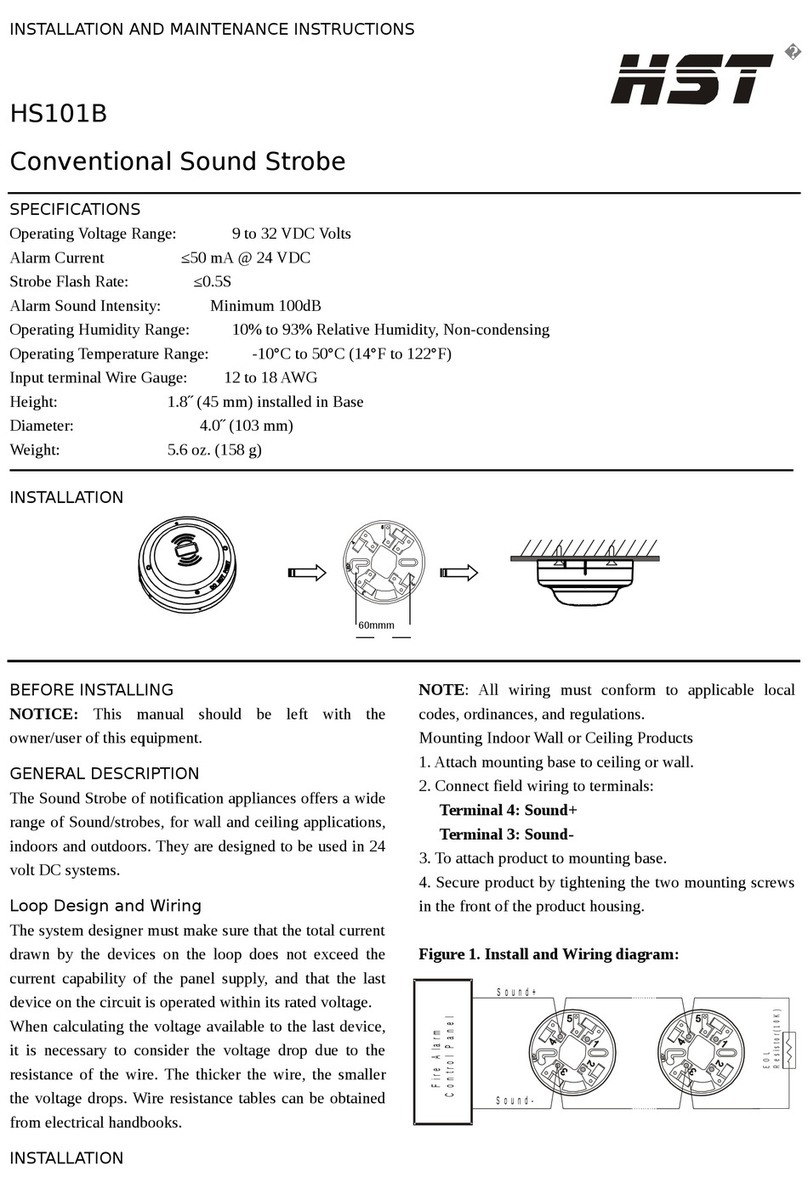Value of Detection Threshold (Lower Explosive Limit):
Natural Gas: 5000ppm (10% LEL)
LPG: 2000PPM (10% LEL)
Coal Gas: 800PPM (2% LEL)
Method of Alarm: Flashing Red LED with 85dB alarm
Warm Up Time: approximately 60 Seconds
Alarm Output: Relay Output (Normal Open 2A@DC24V)
4. IN TALLATION IN TRUCTION
The Gas Alarm is intended to detect leakage of natural gas,
town gas and bottled gas. It is intended for installation in the
home, small commercial properties, and recreational
vehicles.
Installation shall only be undertaken by technicians
holding a certificate issued by an authorized distributor.
For detecting natural gas (lighter than air), the alarm
should be installed within 30 centimeters below the ceiling
and the maximum distance away from the furnace or gas
appliances is 8 meters.
For detecting LPG (heavier than air), the alarm should be
installed within 30 centimeters above the floor and the
maximum distance away from the furnace or gas
appliances is 4 meters.
The alarm should not be located close to any obstacles
preventing natural air circulation. It should also not be
located in a draft or close to a cooker (cooking smells and
other fumes can have a bad influence on gas detection).
The detector can be connected with ecurity alarm panel
as Figure1. Relay output signal can be changed from
Normal Close(NC) to Normal Open(NO) by Jump JP1 on
the PCB board.
The detector can be connected with conventional alarm
panel as Figure 2 or Figure3.
FIGURE1 Terminal Wiring with ecurity Alarm Panel
FIGURE2 Terminal Wiring with Fire Alarm Panel ( 3 Wires)
FIGURE3 Terminal Wiring with Fire Alarm Panel ( 4 Wires)
5. OPERATION AND TE TING
Check and test the gas alarm after installation. It
should be tested weekly and check after re-occupation
following a holiday.
After turn on the power, the LED is on, and then the
unit would take 30 to 300 seconds to warm up. In
the warm up time, the Yellow LED would flashes
until end of the warm up period.
Check that LED indication LED is on to ensure the
power supply is turn on.
Check that the LED flashes every 8 seconds to
ensure the unit is in operating mode.
Press and hold the test button for up to 1 to 3
seconds, and the alarm should sound and the LED
flash rapidly while buzzer is sounding, after 6
seconds later, the alarm exit the test mode and
return to normal operating mode. To ensure the gas
alarm is working, you should test it weekly.






















